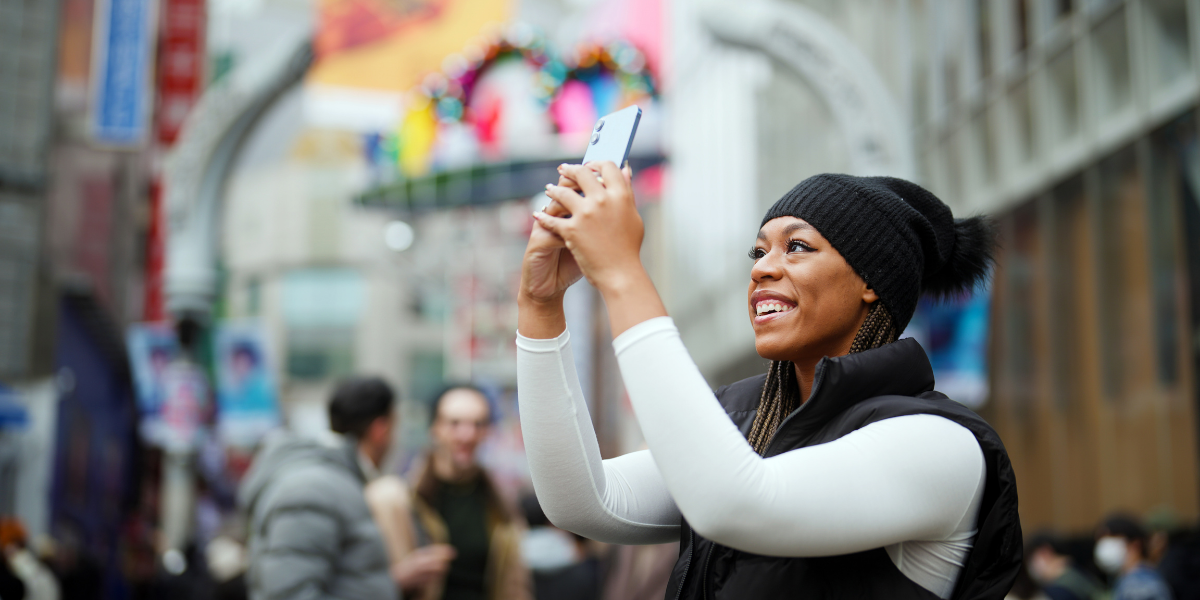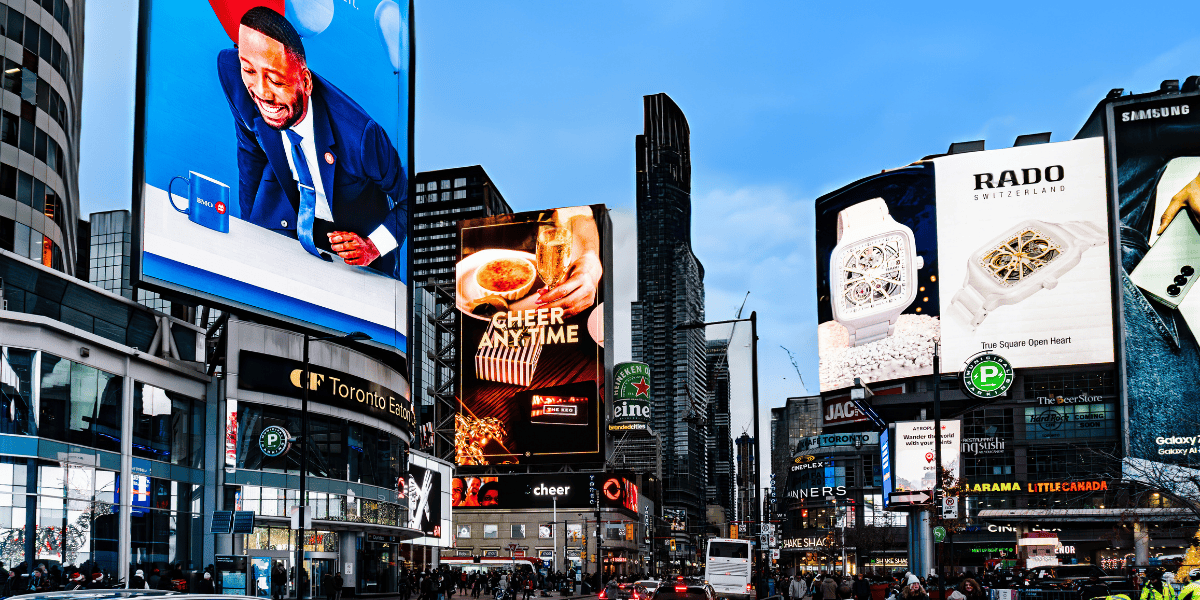
When it comes to advertising, social media dominates the conversation. But what exactly defines a social channel? And how can you stand out on a 16x7 cm screen, when everyone else is fighting for the same attention? In this blog, we challenge you to think outside the phone and consider how outdoor advertising plays into your social media strategy.
Social sharing doesn’t really start on social
Social sharing starts well before someone opens an app—it begins with outside experiences that resonate with someone on a personal level. When something inspires or makes people feel understood, they’re more likely to share it.
The best outdoor ads have the unique power to make an immediate impact. A stunning display can prompt people to pull out their phones, snap a photo and share it with their followers. In fact, 91% of Gen Z and 82% of Millennials are willing to share captivating out-of-home ads on social media, and over half of all social media users have noticed OOH ads being reposted. This user-generated content spreads your brand message organically, reaching audiences far beyond the screen's location, extending your media from paid to earned.
It takes real-world impact to go viral
Going viral on social media is the modern-day equivalent of striking gold. But what does it take to achieve that coveted viral status? It often boils down to capturing real-world moments that are powerful enough to get consumers to stop and look.
Think about it: what makes you share something on social media? More often than not, it's those genuine, impactful moments that leave a lasting impression—and the same goes for branding and advertising. You can create real-world inspiration with your brand and readily propel it into the viral spotlight, exponentially boosting brand visibility and awareness.
Case in point: Share a Coke campaign

Original Share a Coke promotion, 2011
Coca-Cola's famous "Share a Coke" campaign redefined social engagement by replacing its logo with popular names, inviting consumers to "share a Coke" with others. This personalized approach sparked a social media frenzy, with users sharing photos of their customized bottles.
Coca-Cola reached its audiences through outdoor advertising, including interactive pop-ups and billboards around the world. The brand’s strategic blend of social media and out-of-home brought the brand’s consumer engagement to new heights.
A larger play on influencer marketing

Influencers also have the power to turn your out-of-home ads into captivating stories, driving traffic and engagement across social channels. By incorporating hashtags, social handles or QR codes, your out-of-home ads capture attention and invite viewers to engage online. In fact, 39% of U.S. adults are likely to repost an out-of-home ad featuring an influencer or celebrity on their social channels. With the right influencer, your ad can spark conversations, boost engagement and drive real results—both online and offline.
Case in point: Swehl x Molly Baz
Swehl, a breastfeeding startup, partnered with influencer Molly Baz, showcasing her on a digital billboard celebrating motherhood. The partnership gave Swehl access to Molly’s nearly one million followers before the digital out-of-home campaign even went live. After the ad launched (with some accompanying controversy), the brand saw a 500% increase in site traffic. The campaign's success was largely due to having a well-known influencer who helped put a recognizable face, voice and purpose behind the brand.
Social audiences are looking for out-of-home

Social media users aren’t just scrolling aimlessly—they’re actively searching for real-world moments that stand out, and out-of-home ads are making the cut. On TikTok, 82% of users report frequently noticing OOH ads on their feeds, and this trend extends across Instagram (81%), Facebook (80%), Snapchat and X. Nearly half (48%) of those who spot OOH ads online actively engage with the company afterward.
Social ads feel intrusive; out-of-home feels organic (according to consumers)
.png?width=1200&height=400&name=Social%20ads%20feel%20intrusive%2c%20out-of-home%20ads%20feel%20organic%20(according%20to%20consumers).png)
With the constant flood of ads on personal devices, it’s no surprise that 68% of US adults regularly skip online ads due to burnout. Social media ads can often feel like interruptions—popping up mid-scroll and easily ignored. When outdoor advertising captures enough attention to be shared on social media, it creates an organic opportunity for your brand. Instead of receiving the ad directly from you, people see it shared by a friend or family member, making it feel more natural and trusted.
It’s not just about getting consumers’ attention—it’s also about trust. 48% of US adults say they view brands more favorably after seeing an OOH ad. This is largely due to the fact that OOH feels more genuine and less intrusive than its digital counterparts.
So, can outdoor advertising be a social channel?
Outdoor advertising, when thoughtfully designed and placed, becomes more than just a billboard—it turns into a widespread conversation. Striking outdoor ads create buzz both offline and online, allowing brands to amplify their reach and interact with audiences in more meaningful ways.
In a world where every interaction counts, mastering outdoor advertising as a social tool isn’t just a nice-to-have—it’s a must for brands that want to make a lasting impact on their audience.



